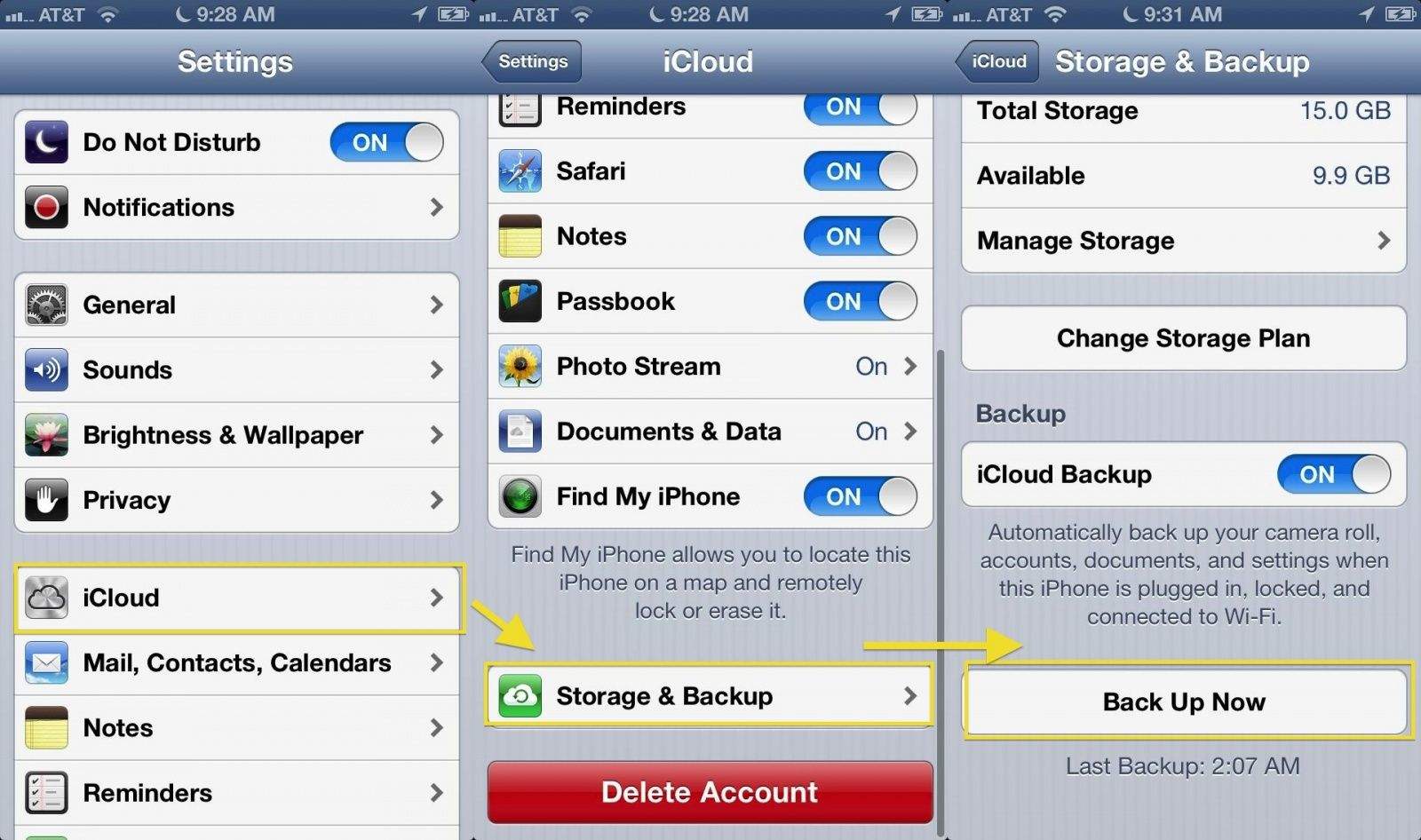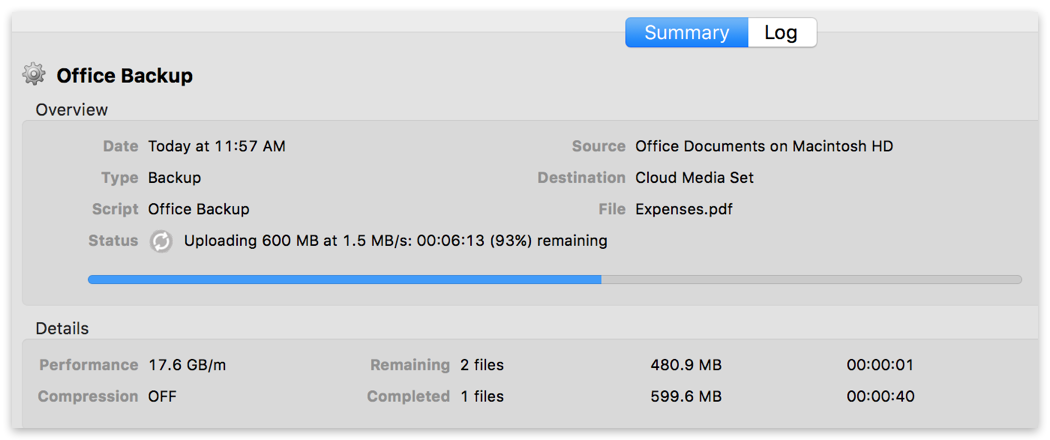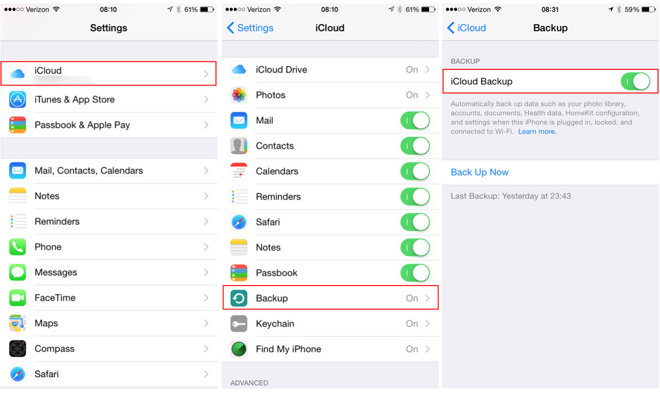How to back up your Mac to iCloud Open System Preferences on your Mac and click on iCloud. Sign in to iCloud if you aren’t already. Tick the box beside iCloud. Click on the Options box in the iCloud row. Make sure that you check the box beside anything you want to be stored in iCloud, such as your. So we built Backblaze's cloud backup for Mac using Apple's Xcode and put the controls in the System Preferences using a native interface. It doesn't matter if you are running macOS 10.8 or higher, Backblaze's online backup service will work for both. Overall, it’s a good software to take a backup for your Mac on the cloud. This one seems to be a bit costly, given the options of backing up data both locally and on the cloud as well. Price: $49.99/Year (30-days Free Trail) Buy Acronis True Image #9. Mac Backup Guru.
Mac is one of the most reliable computers, but after all technology can still fail at any time. So Apple recommends that everyone should back up their Mac at regular intervals to prevent loss of data. This could also be a lifesaver in case of unfortunate events such as fire, theft, or an accidental drop. So in this post, let’s look at the four ways to backup your Mac.
What is Time Machine and How it Works?
Free up storage on your Mac. MacOS can save space by storing your content in the cloud. This isn't a backup, but it includes new tools to make it easier to find and remove large or unwanted files before you make a backup. Use Optimized Storage in macOS.
Time Machine is the best way to backup your Mac. It is an in-built tool on every macOS powered computer. You require an external storage device like a hard drive, SSD, etc. to use it. For best performance, it is recommended that the external drive be at least twice the size of your Mac’s internal drive. For example, if you have a 500 GB drive in Mac, use a 1 TB external drive for Time Machine.
Before you begin, make sure to use a new drive. If you use an old drive, then ensure nothing is on it. If there are files on it, they will be lost after re-formatting. Further, it is not recommended to use the drive for anything else, except Time Machine. But if you plan to use an external drive for both backup and regular use, then you will have to create a partition. It’s best to avoid this. Let’s check it out.
How to Backup Your Mac with Time Machine
Step #1. Connect the external storage device to your Mac.
Step #2. You will see a window asking you to use this drive to back up with Time Machine. Check the box for Encrypt Backup Disk. Then click Use as Backup Disk.
In case you automatically do not see the above window when you connect the external drive, follow the steps below.
Step #3. Click on the Apple logo from the top left and then select System Preferences.
Cloud Backup For Mac Os
Step #4. Next, click Time Machine.
Step #5. Click Select Backup Disk.
Step #6. At last, select your external drive from the list of available disks. Next, it is recommended that you check the box for Encrypt backups. Finally, click Use Disk.
Note: In case the disk you selected for Time Machine is not appropriately formatted as needed, you will be prompted to erase the disk. Click Erase to proceed.
Done! You have successfully enabled Time Machine backup for your Mac.
From now on, Time Machine will make periodic backups without needing any action from you (except merely plugging in the external drive). The first backup will take a long time. But future backups will be quick as Time Machine will backup only the files that have changed since the previous backup.
Time Machine on your Mac automatically makes hourly backups for the past 24 hours and daily backups for the past month. Further, it also makes weekly backups for all previous months. The oldest backups are deleted when your backup disk is full to manage storage on the external drive.
Suppose you are shutting down your Mac and want to back it up now to save all changes, then click on the Time Machine icon from the top menu bar and select Back Up Now.
Overall, Time Machine is fantastic. But if you lose your backpack that has your Mac and the external drive, or if a natural calamity hits your house, then chances are both your computer and the Time Machine backup drive will be lost or destroyed. (Unless you back up to Time Machine on a NAS located elsewhere.) So, the next best solution is to use the power of Cloud to store your most important files. Let me show you how.

How to Back up Your Mac to iCloud

Apple gives you 5GB of free iCloud space. This is too little to backup all files from the Mac. But still, it can be used to keep your important documents and data safe and available on all Apple devices. If you like, you can buy a subscription plan that starts at $0.99 for 50GB. Other options are $2.99 for 200GB and $9.99 for 2 TB.
Step #1. Click on the Apple logo from the top left and select System Preferences.
Step #2. Now Click on Apple ID.
Step #3. Next, click on iCloud.

Step #4. Check the box for iCloud Drive.

Step #5. Next, click on Options and choose what you would like to store in iCloud.
Step #6. Desktop & Documents Folders will backup everything in them to iCloud. Similarly, you can choose or (turn off) Numbers, Pages, etc. and Click on Done.
How to Clone Your Mac to Use It as Backup
Cloning is different from a back up because, with cloning, you can create a bootable copy of your entire hard drive. This allows you to access whatever you have on one Mac on another Mac. You can do this simply by connecting the drive to the other Mac, and when you turn on that Mac, press the option key. Finally, select the drive and click the arrow.
Use Dropbox, OneDrive, Google Drive as your Mac Storage
Dropbox, Google Drive, One Drive, Box are some of the most popular online storage services. It is very easy to upload and save files from your Mac to these.
Cloud Backup Systems For Mac
This is not the same as Time Machine backup or cloning. It is simply saving you important files to these cloud services. After you have your photos, music, documents safely stored on these, you can access them on any mobile device or computer.

The free space provided by these cloud storage services vary.
- Dropbox offers 2 GB of free space with every account. Individual paid plan starts at $9.99 per month for 2 TB
- Google Drive, on the other hand, offers 15 GB free with every account. Its paid plans start at $1.99 for 100 GB and go up to $9.99 for 2 TB
- Microsoft offers 5 GB for free with each account. After that, you can pay $1.99 per month for 100 GB of One Drive. Or, you can pay $6.99 per month and get 1 TB of One Drive as well as Office apps. It is a sweet combo
The process of using these services is almost the same for all. First, you have to register (that is to create an account), and then you can sign in to manually backup your files. If you do not want to use the browser, then most of these services have Mac apps that you can install and then simply drop files in their respective folder, and they would be backed up automatically.
You can start using Dropbox, Google Drive, One Drive from these links.
That’s all, folks.
Signing off…
With so many options, there’s no excuse not to back up your Mac routinely. It can save your precious data and make it easy to restore when things go wrong. You can also check out our selection of the best Mac backup software to further help you out. Do you have any further questions about backups? Let us know in the comments below.
Read Next:
I have been an Apple user for over seven years now. At iGeeksBlog, I love creating how-tos and troubleshooting guides that help people do more with their iPhone, iPad, Mac, AirPods, and Apple Watch. In my free time, I like to watch stand up comedy videos, tech documentaries, news debates, and political speeches.
- https://www.igeeksblog.com/author/ankur/How to Turn ON or OFF Facebook Nearby Friends on iPhone
- https://www.igeeksblog.com/author/ankur/How to Reset Hosts File to Default on Mac and Windows PC
- https://www.igeeksblog.com/author/ankur/
- https://www.igeeksblog.com/author/ankur/How to Turn off Unread Mail Count in Mail App on iPhone or iPad
